What's New
Displaying results 1691 - 1700 of 4052
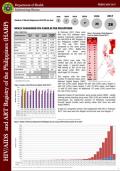
Resource | Fact Sheets,
In February 2017, there were 849 new HIV antibody seropositive individuals reported to the HIV/AIDS and ART Registry of the Philippines (HARP). This was 13% higher compared to the same period last year (751). Eighty-nine percent of those were asymptomatic at the time of reporting.

Resource | Publications,
This International Drug Policy Consortium (IDPC) briefing paper provides an analysis of the current drug treatment system in China and offers recommendations for ensuring its effectiveness.
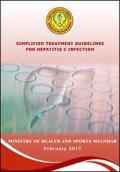
Resource | Guidelines,
Myanmar GI and Liver Society developed guidelines for the treatment of chronic hepatitis C infection in 2009. With the establishment of National Hepatitis Program, this guideline has been revised as the Simplified Treatment Guidelines for Hepatitis C Infection to include the recently developed direct-acting antiviral drugs (DAA) and with simple procedure of Viral Load testing and clinical monitoring.
This simplified guideline is essential for providing guidance on the use of oral, low cost, DAAs, with the aim to reduce the disease burden of Hepatitis C in the community. This guideline provides a clear guidance to all medical doctors for precise and quick clinical decisions with simplified clinical monitoring methods. We also aim for this guideline to be able to provide updated knowledge about the treatment and laboratory monitoring of HCV infection.
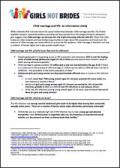
Resource | Fact Sheets,
Developed by Girls Not Brides, with input from members and partners, this brief highlights why the links between child marriage and HIV must be addressed. It recommends further research, targeting and prioritising adolescent girls in HIV responses, and joined-up policy approaches to tackle both issues.
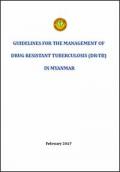
Resource | Guidelines,
The World Health Organization (WHO) estimated that the incidence of MDR/RR-TB in Myanmar was 14 (8.9-18) thousands in 2015. Extensively drug-resistant TB (XDR-TB) has been reported since 2007 and National TB Reference Laboratory diagnosed 12 Pre XDR-TB and 14 XDR-TB patients by Second Line Solid DST in 2015. The third nationwide drug resistance survey (2012 – 2013) showed an MDR-TB rate of 5% among new cases and 27.1% among previously treated cases.
In order to improve management of drug-resistant TB (DR-TB) and expand nation-wide programmatic management of drug-resistant TB (PMDT) in commensurate with new developments, the National Expert DR-TB committee organized meetings in 2016 to update the existing national guideline. This updated guideline has been prepared principally for use by National Tuberculosis Programme (NTP) managers and staff, as well as partner organizations and all professionals, involved in delivering DR-TB care and implementing DR-TB control activities in Myanmar.
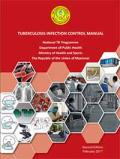
Resource | Tools,
The purpose of this Manual is to guide efforts aimed at reducing TB transmission in healthcare facilities, congregate settings such as crowded prisons, hostels, factories, as well as households of TB patients and the community at large, through the implementation of evidence-based, costeffective and affordable TB-IC measures. The implementation shall be monitored closely to inform the NTP that TB-IC targets of the national strategic plan are met. To facilitate the implementation of TB-IC measures two companion documents have been developed: A Trainers’ Manual and a Job Aids Package.
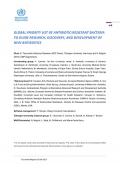
Resource | Tools,
The World Health Organization was requested by Member States to develop a global priority pathogens list (global PPL) of antibiotic-resistant bacteria to help in prioritizing the research and development (R and D) of new and effective antibiotic treatments. To date, the selection of pathogens for R and D activities has been largely guided by small and large pharmaceutical companies according to a variety of parameters, such as perceived/unmet medical need, pressure of investors, market size, scientific discovery potential, and availability of specific technologies. Previous PPLs, issued by the Centers for Disease Control and Prevention.
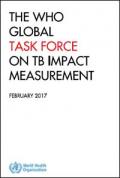
Resource | Fact Sheets,
In June 2006, the Global TB Programme (GTB) in the World Health Organization (WHO) established a Global Task Force on TB Impact Measurement, with the TB monitoring and evaluation (TME) unit in GTB acting as the secretariat.
The Task Force includes a wide range of experts in TB epidemiology, statistics and modelling, representatives from major technical and financial partners and representatives from countries with a high burden of TB. There have been six full Task Force meetings since its inception and many other meetings on specific topics.
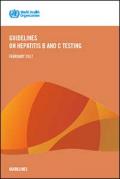
Resource | Guidelines,
Despite the high global burden of disease due to chronic Hepatitis B virus (HBV) and hepatitis C virus (HCV) infection, and the advances and opportunities for treatment, most people infected with HBV and/or HCV remain unaware of their infection and therefore frequently present with advanced disease and may transmit infection to others. There are several key reasons for this low rate of hepatitis testing. These include the limited facilities or services for hepatitis testing, lack of effective testing policies or national guidelines, complex diagnostic algorithms, and poor laboratory capacity and quality assurance systems.
These are the first WHO guidelines on testing for chronic HBV and HCV infection and complement published guidance by WHO on the prevention, care and treatment of chronic HCV and HBV infection. These guidelines outline the public health approach to strengthening and expanding current testing practices for HBV and HCV infection, and are intended for use across age groups and populations. The primary audience for these guidelines are national programme managers in ministries of health and health-care providers in low- and middle-income countries (LMICs) responsible for planning and implementing hepatitis testing, prevention, care and treatment services.
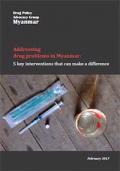
Resource | Publications,
Myanmar’s drug policies are out-dated and inadequate to respond to the great challenges posed by problematic drug use and production in the country. The 1993 Narcotic Drugs and Psychotropic Substances Law has failed to eliminate - or even reduce - drug use, trafficking and production. Worse, the implementation of harsh policies and penalties has caused immense additional harm to Myanmar people and communities.
This policy briefing was drafted by a group of local and international organisations with in depth
knowledge and extensive experience of drug-related issues in Myanmar. It is structured around a set of five strategic interventions, each of which comes with concrete recommendations that are adapted to the Myanmar context. It contains reliable, up-to-date information and examples of evidence-based practices from Myanmar and around the world.





